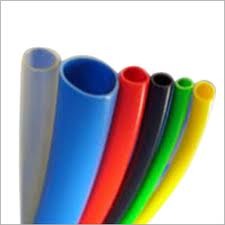PVC is a common plastic materials for different many uses and applications. PVC is flexible, cost-effective and hard-wearing. Plasticized PVC is considered on of the most popular materials not only for electrical insulation but also for data and fiber optic cables too.
is a common plastic materials for different many uses and applications. PVC is flexible, cost-effective and hard-wearing. Plasticized PVC is considered on of the most popular materials not only for electrical insulation but also for data and fiber optic cables too.
PVC is Polyvinyl chloride. It can be bent and turned many times without cracking or warping. This safety feature makes it appropriate for multiple applications. The infusion of plasticizers provides the needed softness for the insulation and covering of electrical and data wires. Cable wire manufacturers can configure different thicknesses
and strengths with these plasticizers. The accurate amount of adaptability is modified to meet the mechanical requirements of differing applications. In addition, total costs of the finished products can be reduced due to the optimization of the design. Nevertheless, equipment utilized for PVC molding is relatively complicated.
In the case of fiber optic cables, the fiber filaments are installed in the center and enclosed by a movable PVC tube. This gives the fiber space for bending during the process of routing near corners and conduits. The PVC is swathed with a special coating of yarn that is shock-absorbent. This material is often made of Kevlar. The cable is also covered by a jacket of PVC which prevents moisture from coming in.
Optical fibers are created when a special variety of glass is heated to a maximum of 4,000 degrees. As the optical fiber is formed, it is monitored by a laser micrometer. This ensures that the diameter is absolutely consistent from end to end.
Optical fibers must be very pure so that they are able to transmit data for long distances. The newly-pulled glass fibers pass through an apparatus that applies and cures a thin coat of plastic shielding. It builds a mirror effect around the fiber. This is the process before coiling. Finished optical fiber products are subject to testing procedures based on different categories as follows:
- Tensile Strength (relating to tension)
- Refractive Index Profile
- Fiber Geometry
- Shrinking and Bandwidth
- Chromatic Dispersal
- Operating Temperature
- Need for Reduction
- Capacity for light underwater
Once testing proves that the newly-produced optical fiber meets all standards, it is now ready for market distribution. Fiber optic cables can be manufactured around one strand or bigger groupings depending on the type of application and the volume of data that needs to be transmitted. This is essential to effective data signal transmission.
The final step is to connect it to the network interfaces and switches that send the digital signals into the cable.
